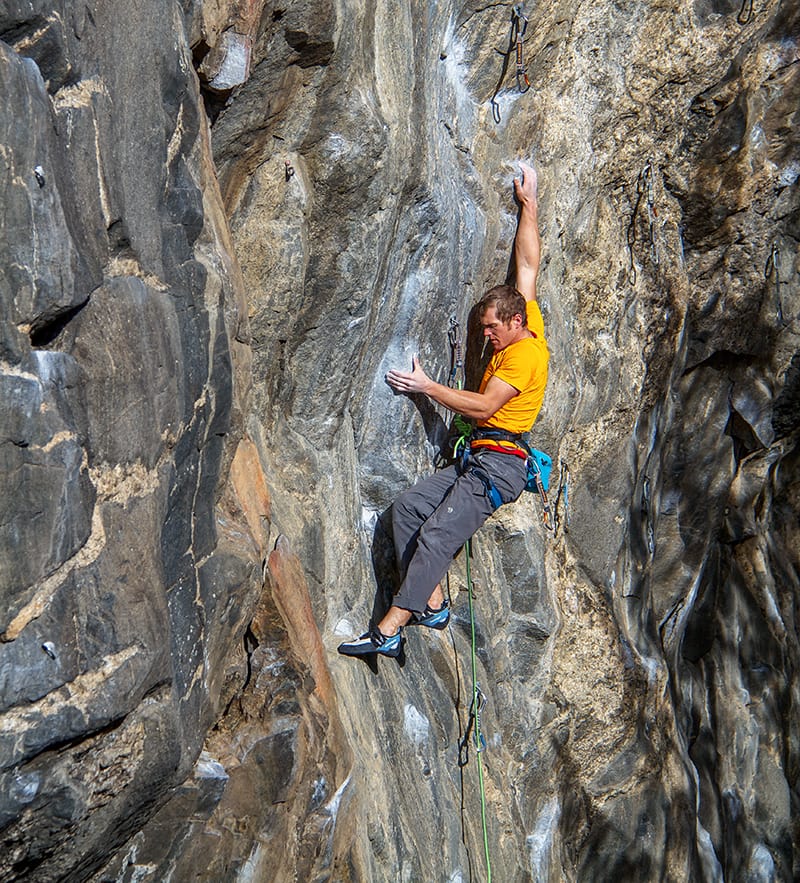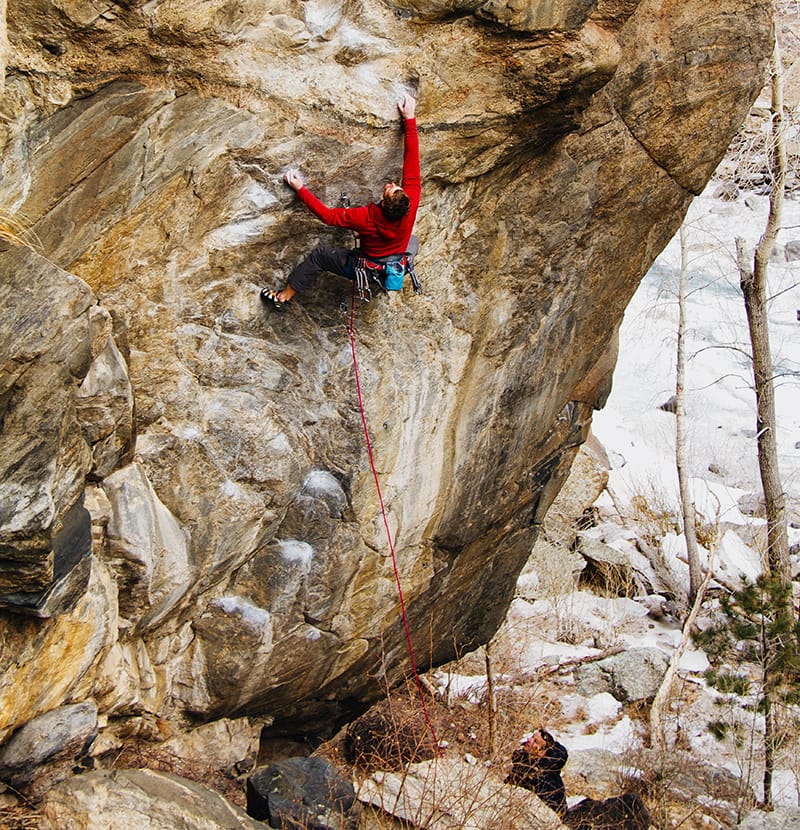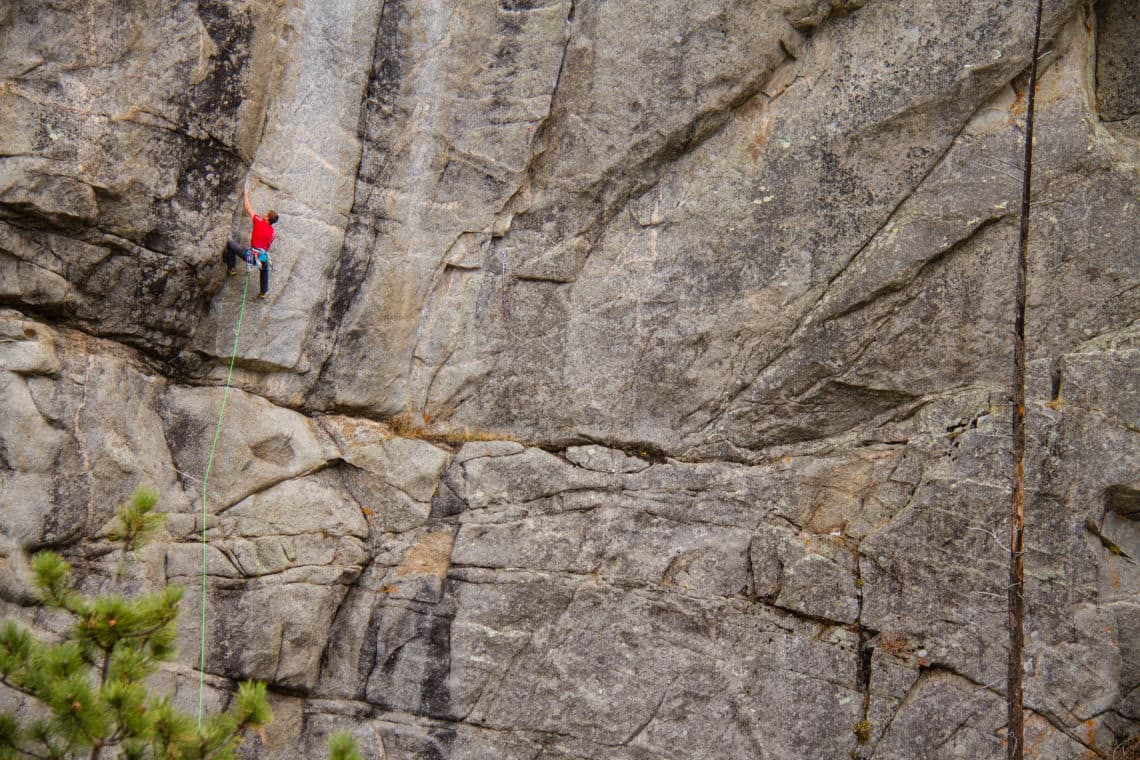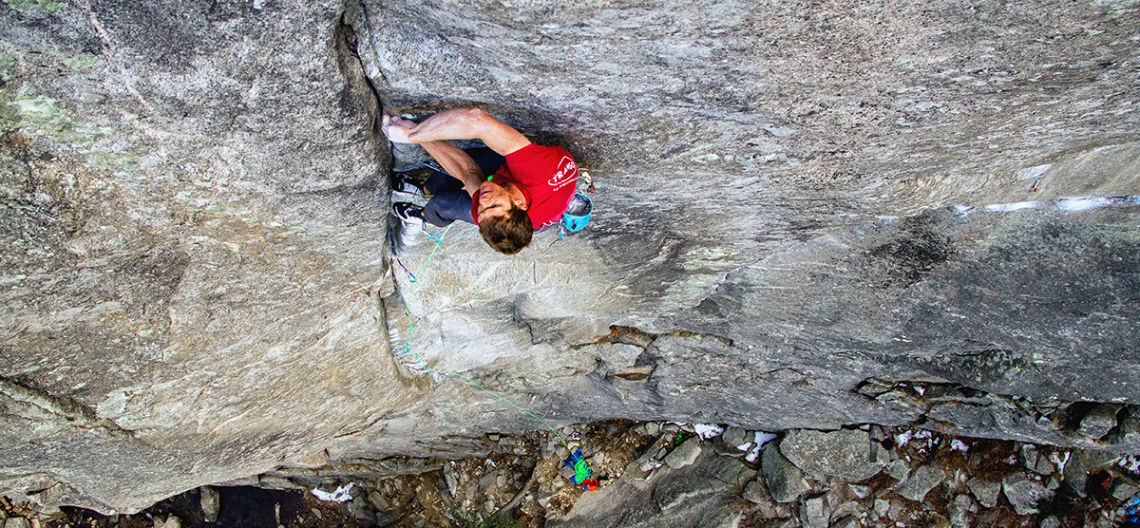Vilfredo Pareto, a late 19th Century economist, noticed that 80% of the land in Italy was owned by only 20% of the population. This ratio, now known as Pareto’s Principle (or simply the 80-20 Rule), can be (over) simplified by saying that, generally speaking, 80% of the results of any given endeavor are created by 20% of the effort.
An example is: 80 percent of a company’s profit comes from 20 percent of its customers. Tim Ferris also loosely adapted this idea to his best-selling book The Four Hour Body, which I only flipped through but find compelling (I got 80% of the gist by only reading 20% of the words!).
The trick is to know what 20% is doing the work. By applying your focus to that crucial 20 percent, you can optimize your time to get the most bang for your buck.
As a climber with a career, I’m constantly trying to maximize the effort I put into climbing. Recently, I’ve wondered how Pareto’s Principle can apply to my rock climbing? What are those 20% of efforts in climbing that will yield the greatest results?
I spent years just trying to rock climb as best I could, dedicated to the old adage that the best training for rock climbing is rock climbing. Sure, I was doing some things right, but what would my learning curve look like if I’d just been a bit more effective in where I put my effort 10 years ago?
Below I’ve listed my completely anecdotal, unscientific, 100% subjective advice strategies for climbing improvement. For me, these are that 20 percent—the low-hanging fruit. Before I get into them, however, I want to say one thing: This is the least you can do to improve performance – to truly maximize your climbing, the devil is in the next 80%. But for most folks, especially those who have jobs and can’t spend 6 hours a day training and three months a year climbing in Spain, here’s where I think you should put your effort.
Work the Antagonists
One of the most effective uses of your time is avoiding injury. What this really means is that, instead of doing those last few pitches in the gym, you should put effort into injury prevention.

Get strong shoulders and work on your antagonist muscles—the “push” muscles. Spending 10 minutes to do some antagonist work every day might translate to many extra days, months and potentially years of more effective climbing if you don’t have to deal with injury.
Hangboard
Physiologically, your fingers are almost always the weakest link and are almost certainly your limiting variable. Get them stronger, and the rest of climbing becomes easier. It is actually that simple. Even better, strengthening fingers by working out on a good hangboard doesn’t take a lot of time compared to other climbing sessions. Plus, hangboards are cheap and can be installed just about anywhere. There are plenty of ideas for how to hangboard out there. It’s not rocket science, but it does take know-how and skill.
I use the Rock Climber’s Training Manual protocol because it’s simple to do and reliably effective. The RCTM, as well as lots of other training sources, gets into much detail about long-term periodization training. This stuff is great, but it requires a lot more commitment of focus and time, and it varies significantly depending on what kind of climbing you want to do. But, as long as you want to climb things that involve grabbing holds, improved finger strength will be an asset. A commitment to each year doing two to three hangboard “seasons” (i.e. 6-10 workouts every three days with minimal actual climbing in that time) will produce results.

Steal Beta
Knowing how to climb a route will no doubt increase your likelihood of actually climbing it. And generally, climbers are happy to spray you down free of charge. If the onsight adventure is what you’re after, go for it. But if you want to send, learn from others’ toil and mistakes. Whether it’s watching a local who laps the route on the daily, searching through grainy YouTube videos, trolling Mountain Project, or just egging on your buddy around the campfire, get beta on what works to climb the route. Sure, one could argue this approach crumbles climbing’s pillar of self-reliance, but when you literally can watch Tommy and Kevin do every single move of the Dawn Wall on the news, deliberate ignorance seems a bit asinine.
Eat Well (and be light)
Now that you’re doing your hangboard workouts, you know that adding 5 pounds to your waist can turn a mellow half-crimp into a fierce finger battle. That works the other way, too. Take 5 more pounds off, and the holds feel that much better.
It’s still not PC to tell people they should lose weight, and there is an obvious line between being at a good “fighting weight” and being unhealthily lean. The idea is really to eat well, not starve. Food is fuel, too, so it’s important to eat enough to have the energy to climb and keep your body working well. What works for me is a diet of mainly lean proteins, lots of vegetables, and whole grains (wild rice, quinoa, polenta for example). I avoid sugars and starches except around climbing workouts.
Take Care of your Skin
For a climber, a flapper is akin to getting a flat tire in the last stage of the Tour de France. The amount of time it takes for a flapper to heal impede your performance for days, even weeks. It’s much more effective to constantly keep your finger skin in good condition by cycling in rounds of balm after a hard day of cragging. Use emory boards to file your skin down before climbing in order to remove any tiny flaps that could easily turn to tears. Consider adding in cycles of Antihydral cream, to toughen up your skin in the days before climbing.
Separate “Training” and “Performing”
“Training” is supposed to break you down, make you tired, push you beyond what you’ve done in the past. Thus, “training” means a sustained campaign over days and weeks of doing hard workouts, being tired from one workout when you start the next, repeating exercises (which could be climbing a route) deep into fatigue. You rest only enough to avoid injury and make it through the next workout.
On the other hand, “performing” is about maximizing your ability to climb well. This means plenty of rest, minimizing effort, and generally babying yourself so that when you tie in, you are a well-oiled, fiery-eyed climbing machine. Most folks don’t differentiate between these, but knowing which mode you’re in will help you have focus for a day of climbing.
Work on Your Mental Weakness
The first step is admitting you have a problem. And yes, you have a problem. This problem usually involves some combination of:
fear of falling, fear of failure, tunnel vision, attachment to a specific outcome, impatience, lack of focus or awareness, poor breathing or eye control, poor technique, being unable to shift your climbing “gears,” “thinking down,” and climbing for the wrong reasons
There are lots of ways to work on these things. It could be as simple as taking a video of yourself climbing or asking another experienced climber to watch you and give you some feedback. Still, no matter how strong your fingers are, you can’t out-climb your brain.

Stop making excuses.
Yes, climbing is hard. Enumerating why it’s harder for you is wasted effort. If you want to climb it, figure out how to make it happen.




Great post! Thanks for sharing stuff appropriate for us Weakened Warriors!
Really cool post, man. Just getting into climbing and this will be a big help.